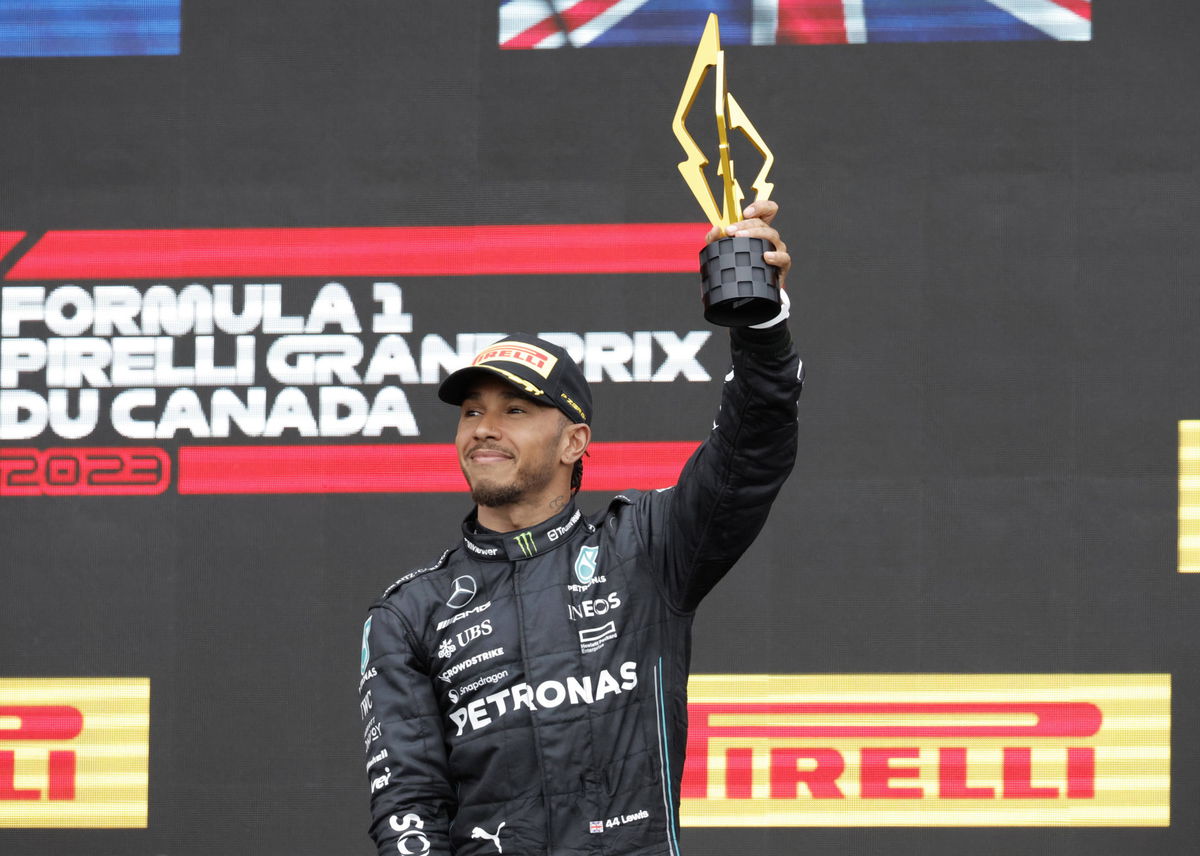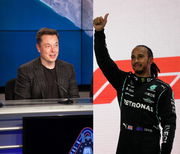
Imago
June 18, 2023, Montreal, Quebec, Canada: Third placed LEWIS HAMILTON of Great Britain and Mercedes celebrates on the podium during the F1 Grand Prix of Canada at Circuit Gilles Villeneuve on June 18, 2023 in Montreal, Quebec, Canada. Montreal Canada – ZUMAc132 20230618_zap_c132_011 Copyright: xAndrewxChinx

Imago
June 18, 2023, Montreal, Quebec, Canada: Third placed LEWIS HAMILTON of Great Britain and Mercedes celebrates on the podium during the F1 Grand Prix of Canada at Circuit Gilles Villeneuve on June 18, 2023 in Montreal, Quebec, Canada. Montreal Canada – ZUMAc132 20230618_zap_c132_011 Copyright: xAndrewxChinx
F1 boss Bernie Ecclestone said, “I’m not interested in tweeting, Facebook and whatever this nonsense is. I’d rather get to the 70-year-old guy who’s got plenty of cash.” While this sentiment may have been a prevailing perspective, since the 1st ever F1 race was held in 1950, F1 has been regarded as one of the most popular and exciting motorsports in the world. With its fast cars, thrilling races, and vibrant cities, F1 has captivated the hearts of millions of fans globally. Thus, the journey to becoming the powerhouse it is today was not going to be possible without breaching Bernie’s sentiments against social media & digital platforms.
Watch What’s Trending Now!
F1 racing has undergone a remarkable transformation, thanks to a combination of strategic initiatives and the influence of Lewis Hamilton. Faced with challenges such as a lack of digital presence and an aging fanbase, how did F1 manage to turn the tide around? In this article, we will delve into these details further.
ADVERTISEMENT
How did Lewis Hamilton save F1?
Lewis Hamilton with an impressive 7 F1 world championships, emerged as a driving force behind the sport’s revival. His remarkable performances on the track, combined with his charismatic persona, made him a global icon. Hamilton’s influence extended beyond racing, as the Briton attracted diverse audiences and breathed new life into F1’s image.
Hamilton’s involvement in the sport not only elevated F1’s global appeal but also attracted other famous personalities, adding a touch of Hollywood glamour to the racing world and now he is making a movie with Brad Pitt on F1. But that’s not all. Liberty Media, responsible for F1’s digital transformation and its newfound popularity, entered F1 allured by Lewis Hamilton.
Top Stories
“Have Some Shame”- Fans Tear Apart F1 Pundits’ Shocking 2025 Driver Ranking

Who Is Canadian F1 Billionaire Lawrence Stroll’s Daughter & Heiress Chloe Stroll?

Who Is Oscar Piastri’s Father, Chris Piastri? Co-Founder of Multibillion Dollar Automotive Company

Max Verstappen’s Siblings: Everything We Know About Victoria, Blue Jaye, Jason Jaxx, and Mila Faye

“Even the Activist Lewis Hamilton Misses That”: Tesla CEO Elon Musk’s Hilarious Take On F1 Gets a Thumbs Up From Fans

ADVERTISEMENT
What led to Formula 1’s digital evolution?
Before the digital era, F1 relied heavily on traditional broadcasting and sponsorship deals to generate revenue. But the sport was lacking a comprehensive digital marketing strategy, which hindered its engagement with younger audiences. However, the acquisition of F1 by Liberty Media marked a turning point. Recognizing the potential of digital platforms, Liberty Media conducted in-depth research to better understand their fanbase and revamp the sport’s approach.
ADVERTISEMENT
One key factor in F1’s digital evolution was the decision to provide engaging and valuable content on platforms like YouTube. The sport started producing highlight videos, behind-the-scenes content, and interactive posts, allowing fans to connect with the sport on a more personal level. This shift in approach attracted a younger audience, boosting F1’s presence on social media.
ADVERTISEMENT
Unlocking the millennial market: Formula 1’s social media strategy
Recognizing the importance of data-driven decision-making, this research unveiled a significant shift in consumer behavior, highlighting the desire for a more intimate connection with the sport and revealing a crucial demographic for F1’s growth – millennials. These tech-savvy individuals were eager to connect with the sport through digital platforms, and this realization prompted F1 to enhance its social media presence.
The Formula 1 Group doubled down on providing engaging content on platforms like YouTube, Instagram, Twitter, Podcasts, and TikTok. Highlight videos, behind-the-scenes glimpses, games, live sessions, and interactive posts allowed fans to experience F1 beyond the racetrack. The introduction of official esports competitions, a fantasy game, sports betting deals, and a collaboration with Amazon Web Services further diversified Formula 1’s engagement strategies.
ADVERTISEMENT
Vegas, here we come! 🤩
The spectacular @SphereVegas lights up for lights out in 100 days!
Get ready for F1 cars charging up and down The Strip on Saturday November 18 🗓️#LasVegasGP #F1pic.twitter.com/l1Pg404BoP
— Formula 1 (@F1) August 11, 2023
This strategic shift toward social media was a game-changer. The sport’s official YouTube channel witnessed a significant increase in subscribers, with the number growing from under 2 million to more than four and a half million in just one year. More importantly, more than half of these new subscribers were under the age of 35, demonstrating F1’s success in attracting a younger audience.
ADVERTISEMENT
How YouTube led to F1’s massive growth?
YouTube emerged as a game-changer in F1’s digital transformation. The platform provided a dynamic space for Formula One to share its content, engage with fans, and showcase the sport’s excitement. The creation of official YouTube channels allowed Formula One to produce and share high-quality videos, including race highlights, expert analysis, and exclusive behind-the-scenes footage.
ADVERTISEMENT
The strategic use of YouTube’s features, such as live streaming and interactive features, allows fans to engage in real-time discussions and comments during races.
This strategy significantly expanded Formula One’s global visibility and fan engagement, attracting a diverse audience to the sport. The YouTube partnership also extended to collaborations with influencers, vloggers, and content creators like Will Buxton, Rosanna Tenant, Laura winter, Peter Windsor, etc.
ADVERTISEMENT
These collaborations further expanded Formula 1’s reach and introduced the sport to new demographics.
In a remarkable turnaround, F1’s transformation from an old boys club to a modern, dynamic entertainment brand was achieved through strategic initiatives fueled by data-driven insights; it was a shift in philosophy, an embrace of modernity, and an invitation to the future.
As the sport embraces the next chapter with open arms, it sends a resounding message that embracing change is not an option—it’s a necessity. In the words of legendary Ayrton Senna, “Adapting to change is not a weakness, but a strength.”
WATCH THIS STORY | The Best F1 Themed Movies
ADVERTISEMENT
ADVERTISEMENT
ADVERTISEMENT

